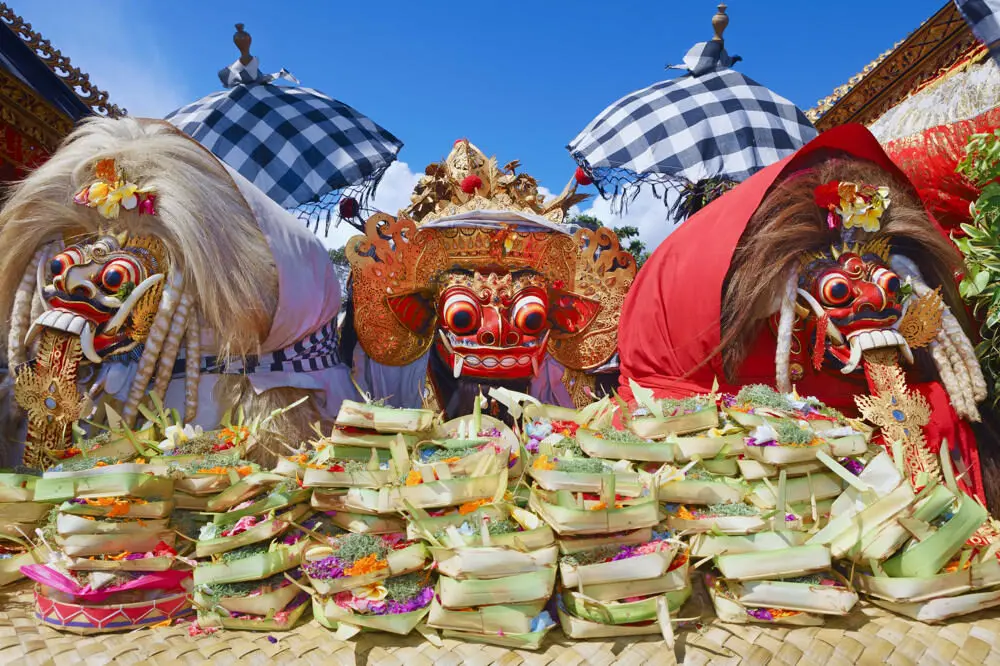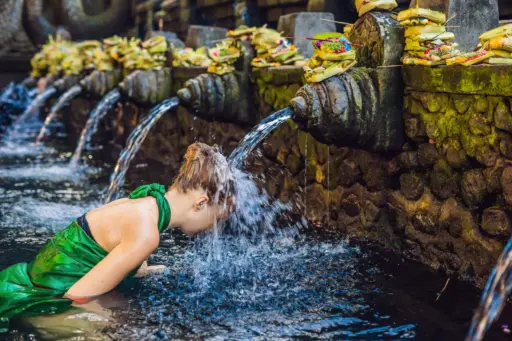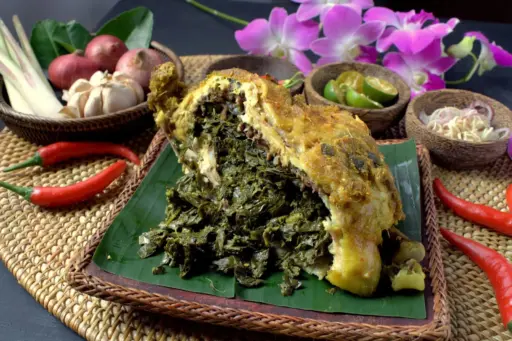FAITH AT THE HEART OF BALI
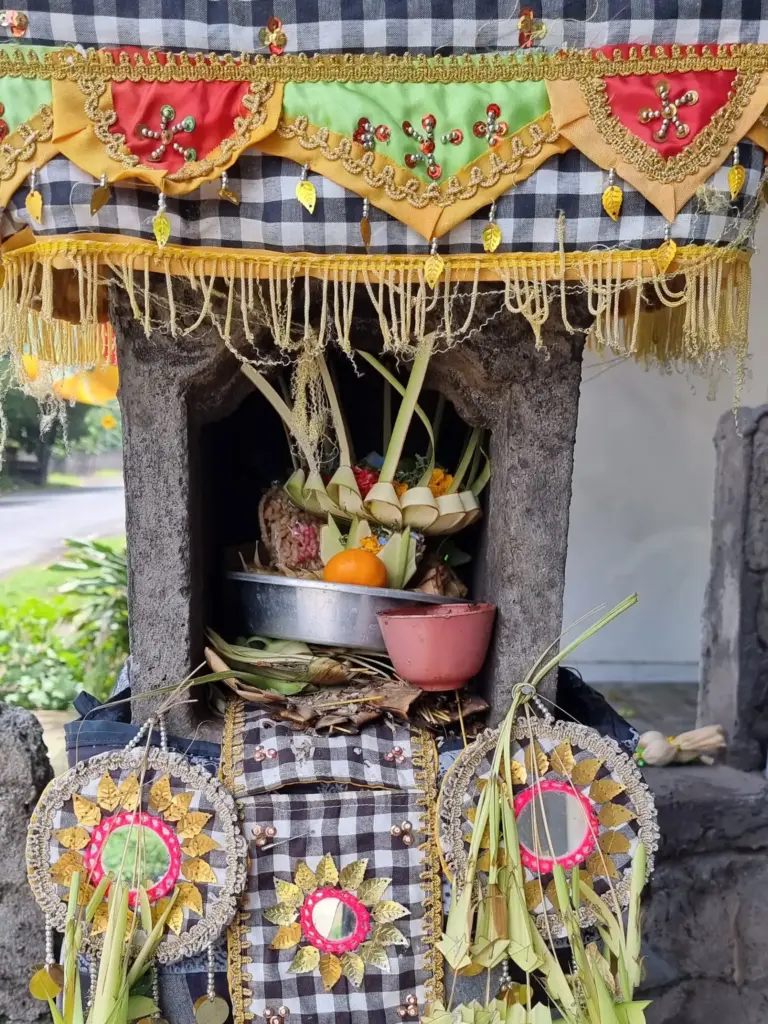
Bali’s beauty is often described in terms of its beaches, rice terraces, and sunsets, but to truly understand the island, you need to see it through the lens of its faith. Balinese Hinduism is the soul of the island – a unique blend of Hinduism, Buddhism, and ancient animist traditions that shapes everything from the way villages are built to the way each day begins and ends.
For visitors, the most visible signs of this faith are the temples, ceremonies, and the small, colourful offerings (canang sari) placed on doorsteps, altars, and even scooter seats. But behind these sights lies a rich belief system that is deeply woven into daily life.
AN OVERVIEW OF BALINESE HINDUISM
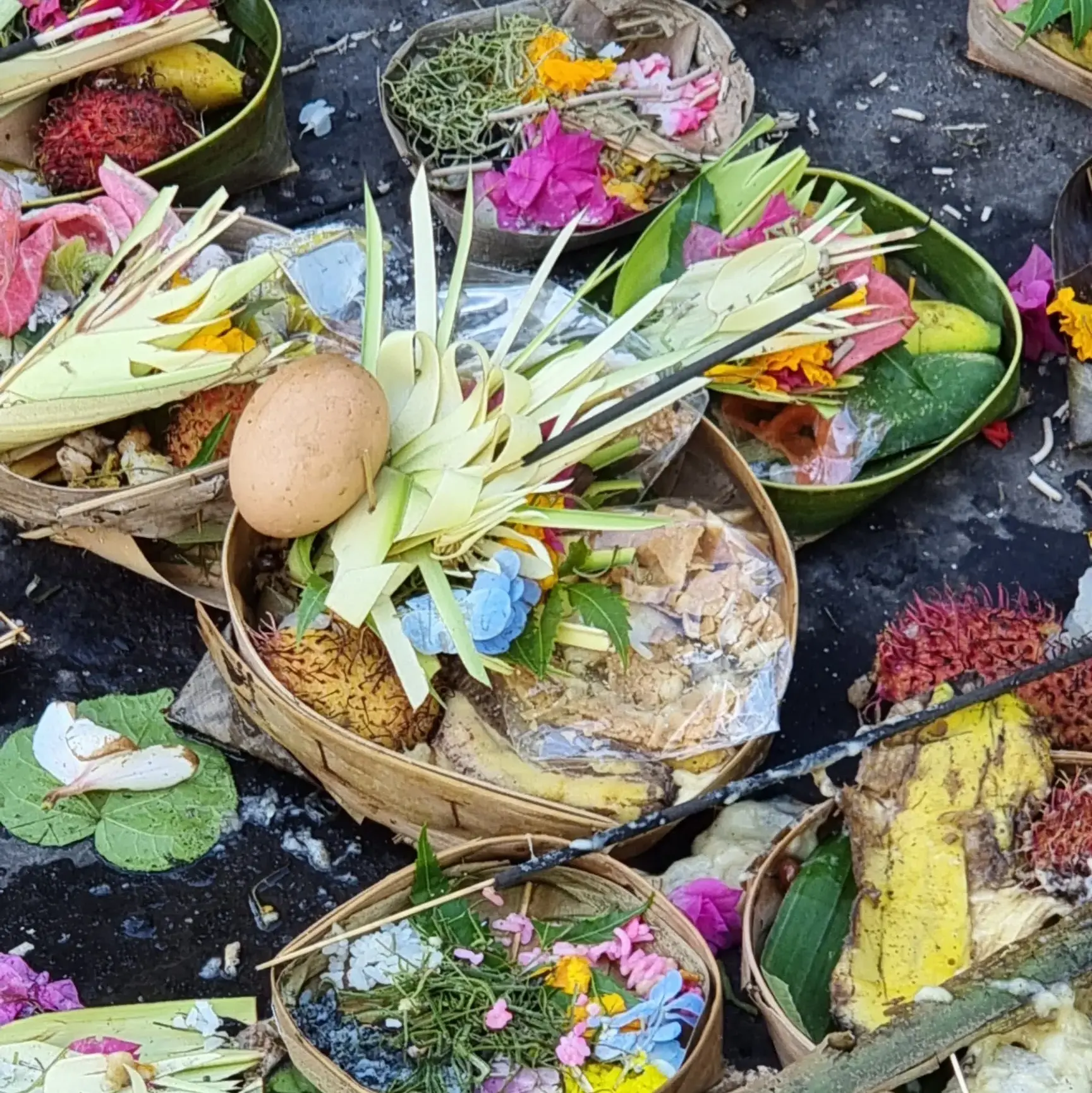
Balinese Hinduism is distinct from the Hinduism practiced in India. It shares many of the same deities and philosophical concepts, but centuries of isolation and the influence of local animist beliefs have created something uniquely Balinese.
The religion is built around the concept of Tri Hita Karana – the “three causes of well-being”:
1. Harmony between humans and the divine (parahyangan).
2. Harmony between humans and each other (pawongan).
3. Harmony between humans and the natural environment (palemahan).
This philosophy influences everything, from farming practices to community decision-making, and it’s why spirituality is so integrated into everyday activities.
CORE BELIEFS AND DEITIES
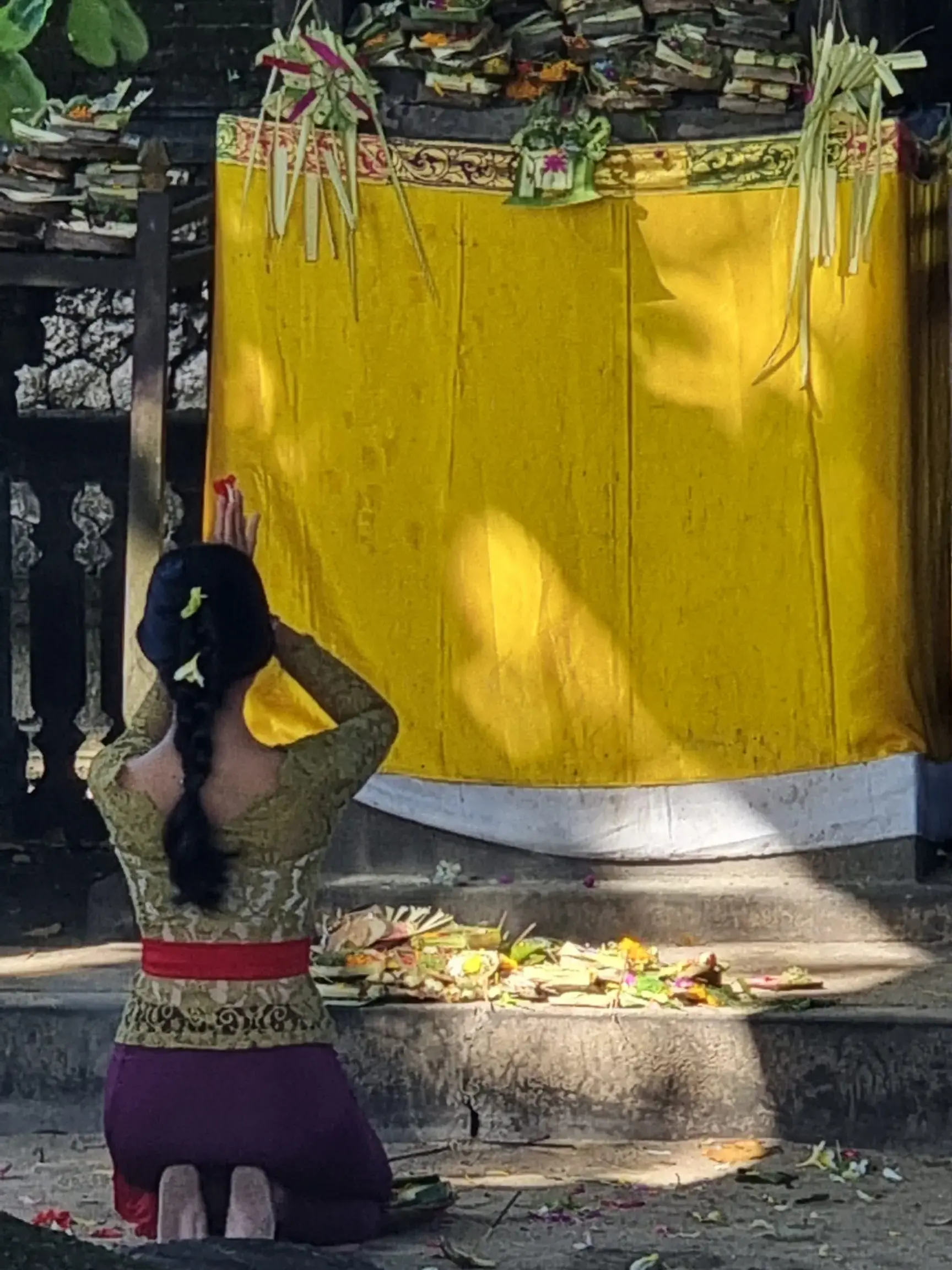
Balinese Hindus worship a supreme god, Sang Hyang Widhi Wasa, who manifests in many forms. Temples and shrines may be dedicated to gods and goddesses familiar to Indian Hinduism – Shiva, Vishnu, Brahma, Saraswati, and Dewi Sri (goddess of rice) – as well as local deities and guardian spirits.
Ancestors also play a central role. Balinese believe that the spirits of their forebears watch over the family, and regular offerings are made to honour them. Life is seen as a cycle of birth, death, and rebirth, with ceremonies marking each stage.
DAILY OFFERINGS – CANANG SARI
Perhaps the most iconic element of Balinese Hinduism for visitors is the canang sari, the small, square palm-leaf baskets filled with flowers, rice, and sometimes sweets or coins.
What They Contain and Symbolise
· Base: A palm leaf tray (ceper) represents the world.
· Flowers: Arranged by colour and direction – white for the east (Iswara), red for the south (Brahma), yellow for the west (Mahadeva), blue/green for the north (Vishnu).
· Rice or food: Nourishment for the spirits.
· Incense stick: Carries the essence of the offering to the gods.
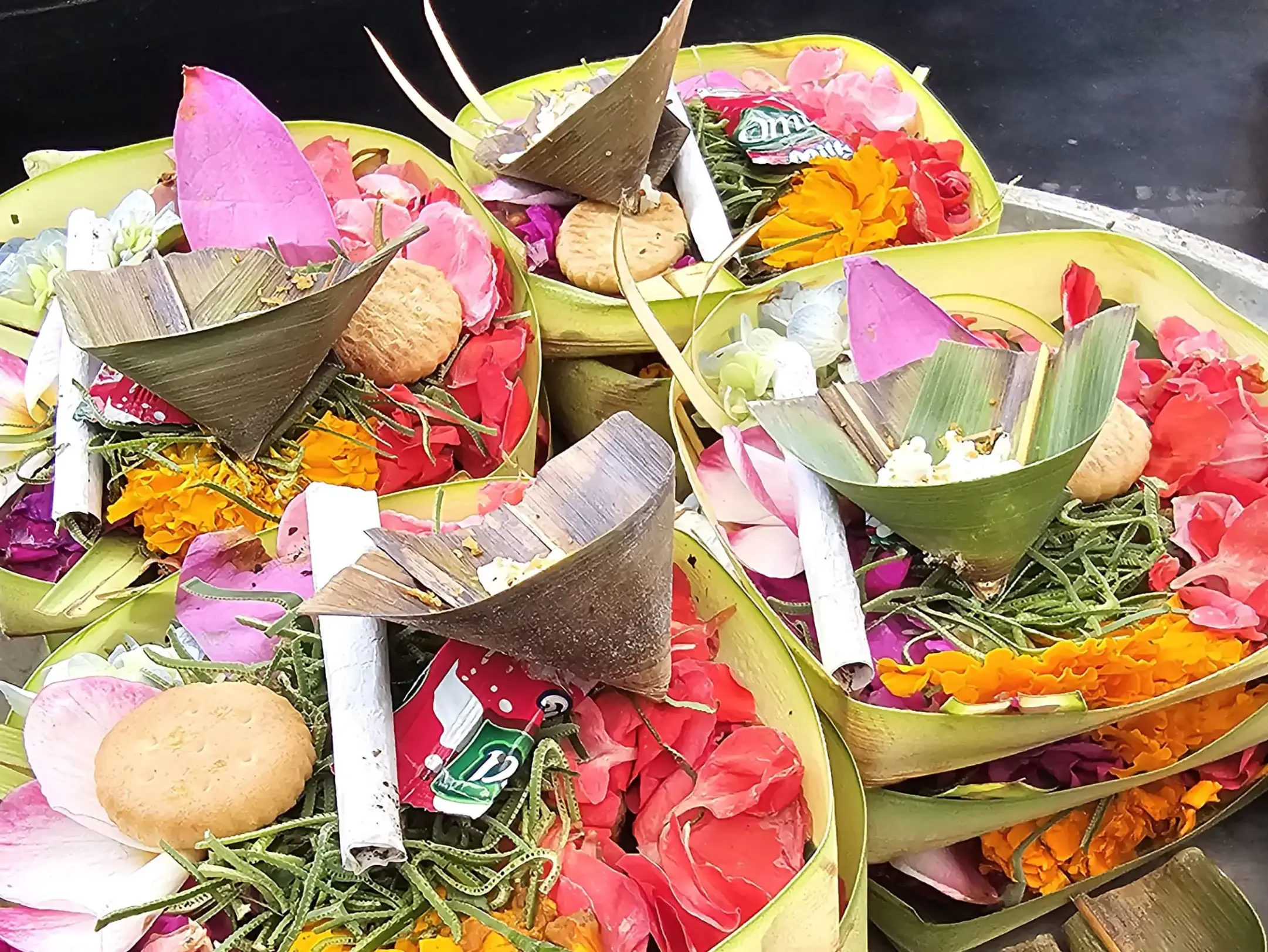
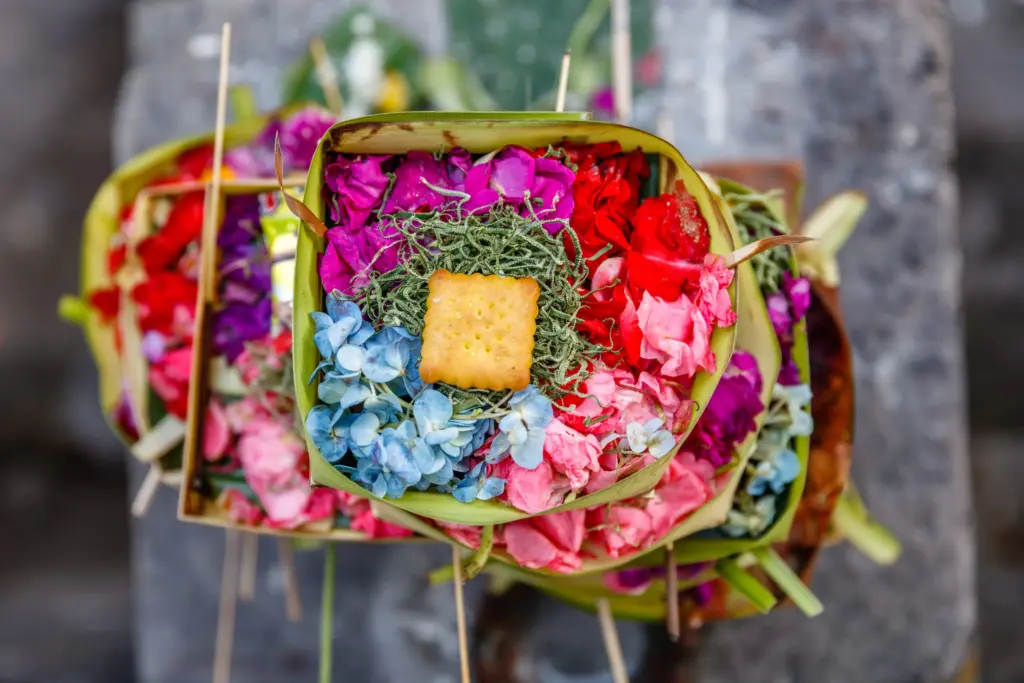
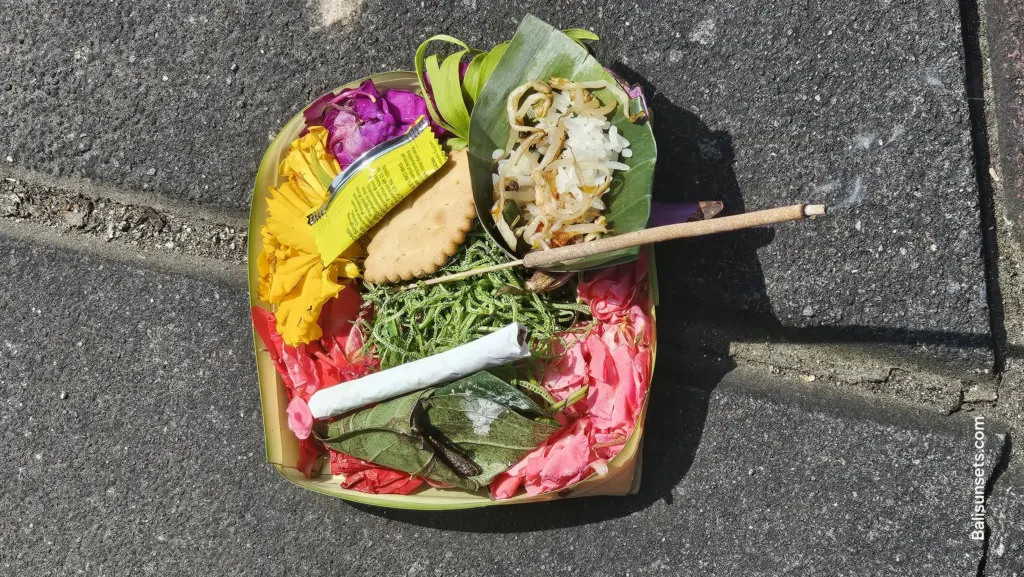
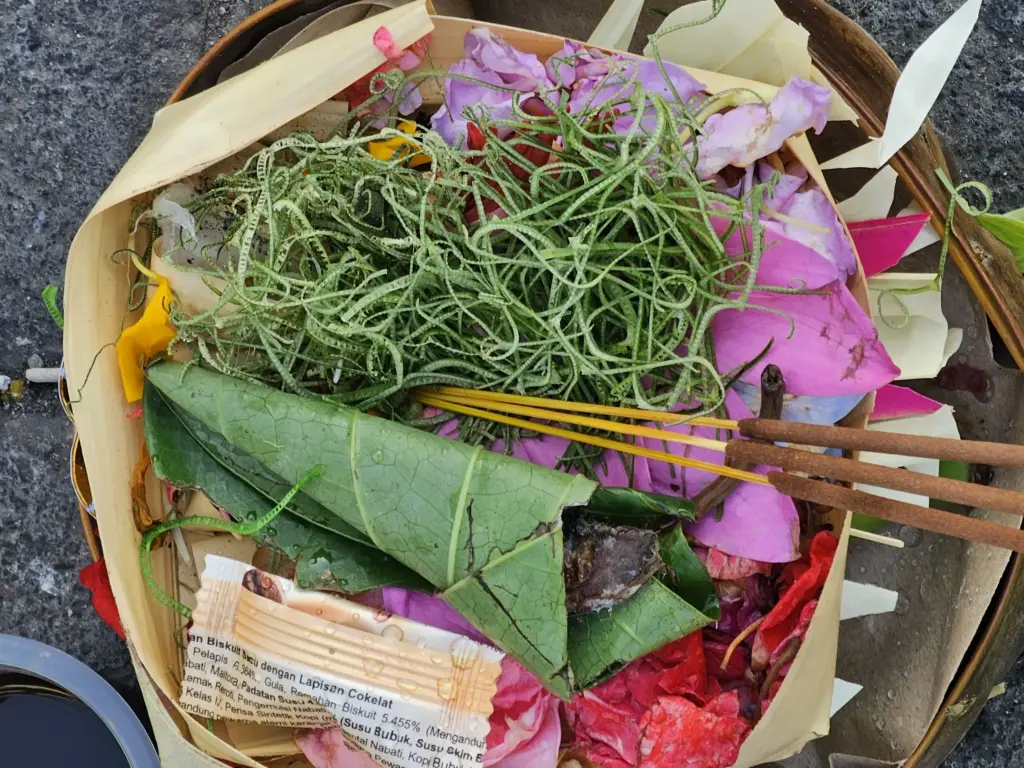
Who Makes Them and When
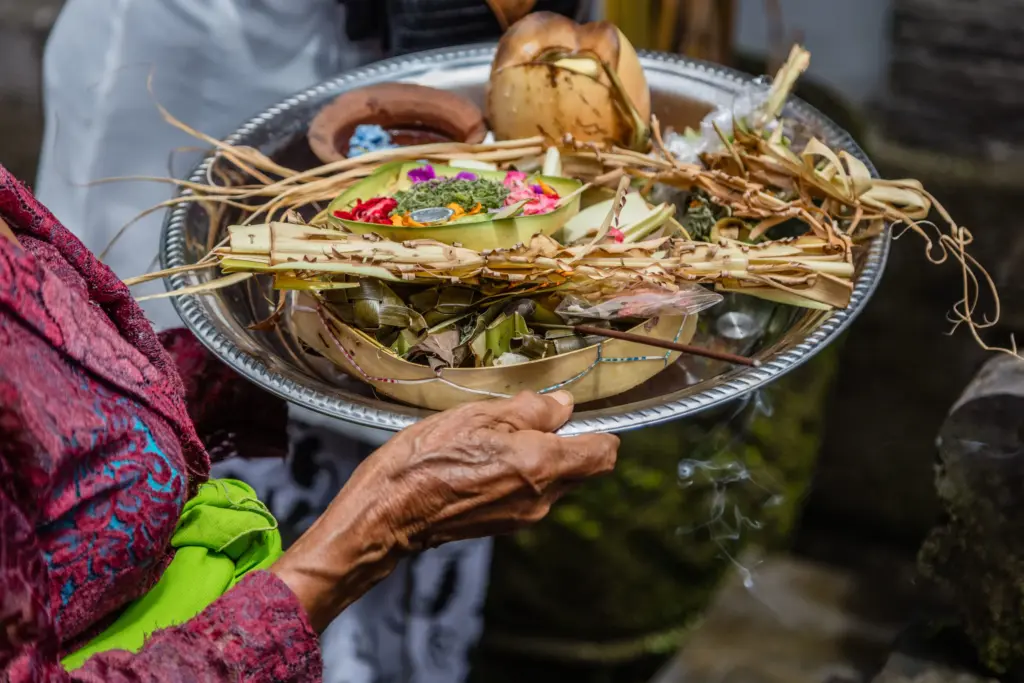
Women in the household prepare dozens each morning, often before breakfast. You will see them placed in temples, on family shrines, in shops, on vehicles, and even at busy intersections.
Etiquette for Visitors
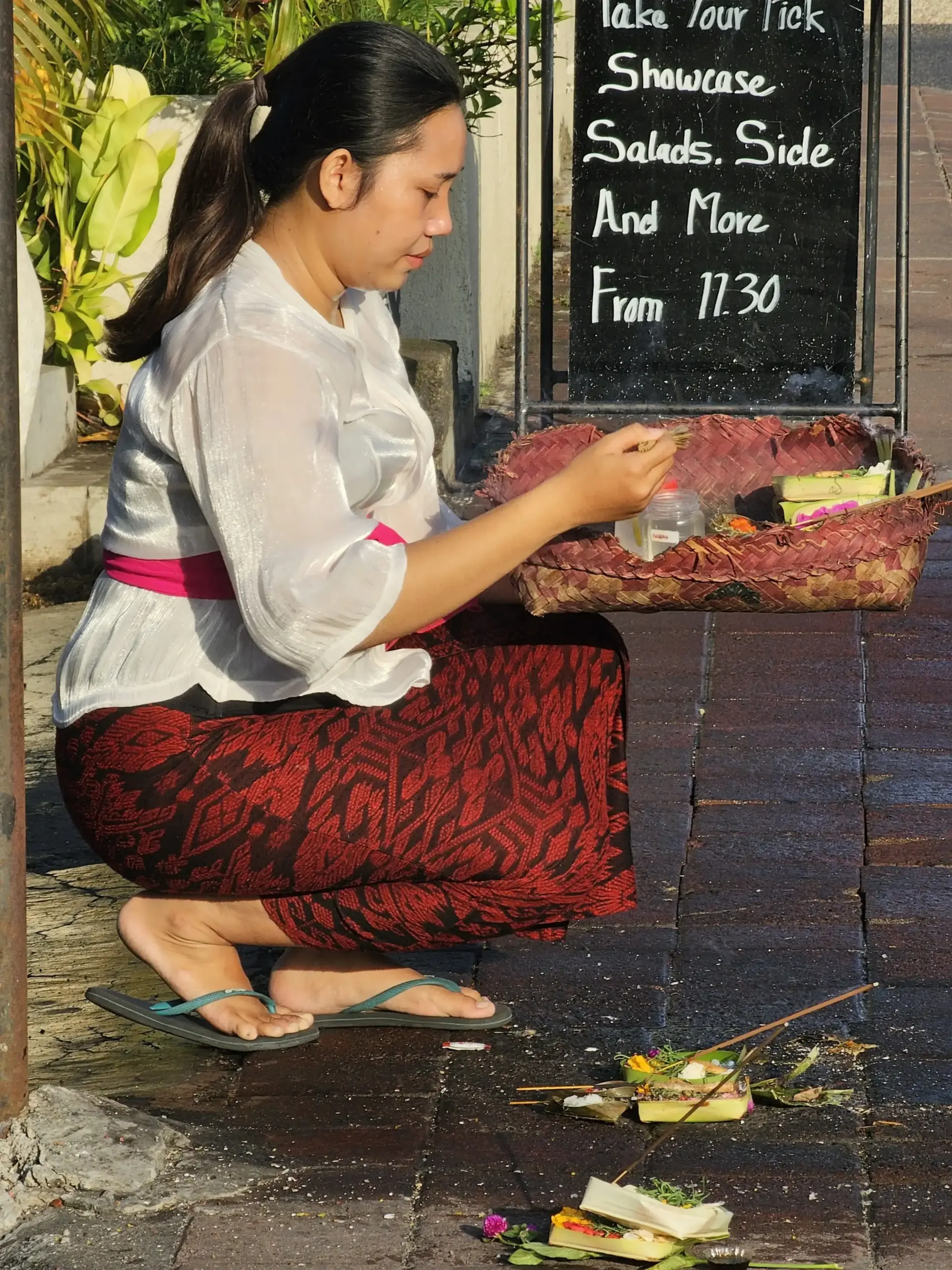
Do not step on or over offerings, even if they are on the ground. If you see an offering being placed, wait until the incense is lit before passing by.
TEMPLE LIFE AND CEREMONIES
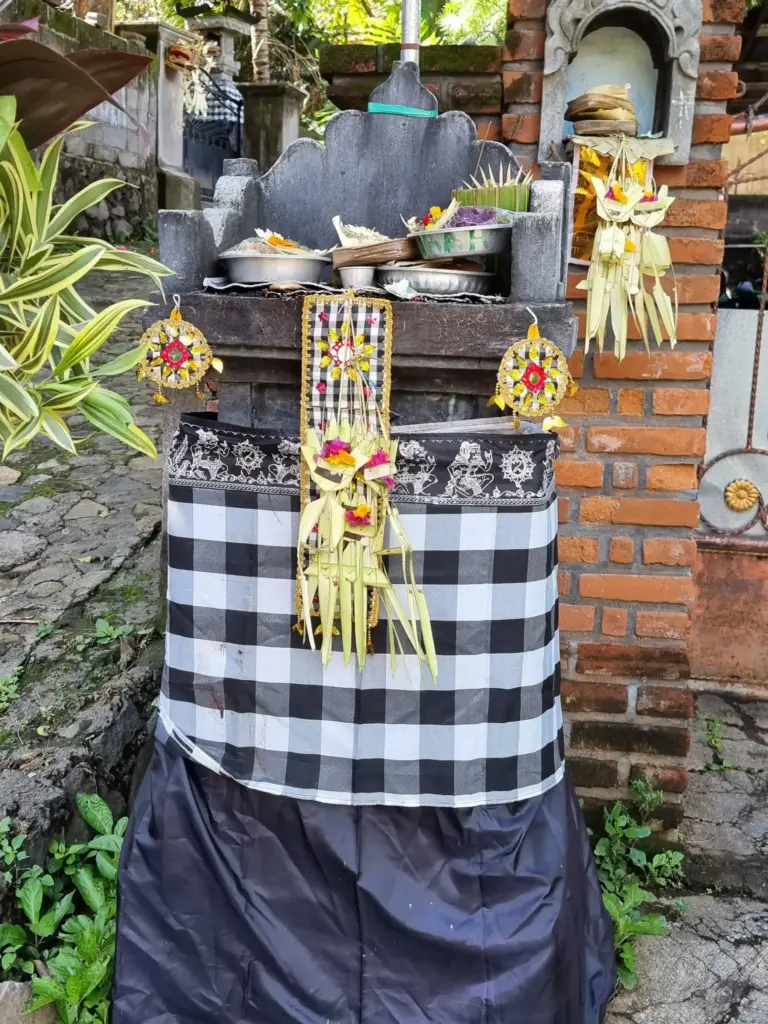
Structure of a Pura
Balinese temples (pura) are open-air compounds with a series of courtyards, separated by ornate gates:
· Outer courtyard (jaba pisan) – for preparations.
· Middle courtyard (jaba tengah) – where ceremonies are staged.
· Inner courtyard (jeroan) – the most sacred space, housing shrines.
Temples can be family shrines, village temples, or large public temples like Pura Besakih, the “Mother Temple” on Mount Agung.
Types of Ceremonies
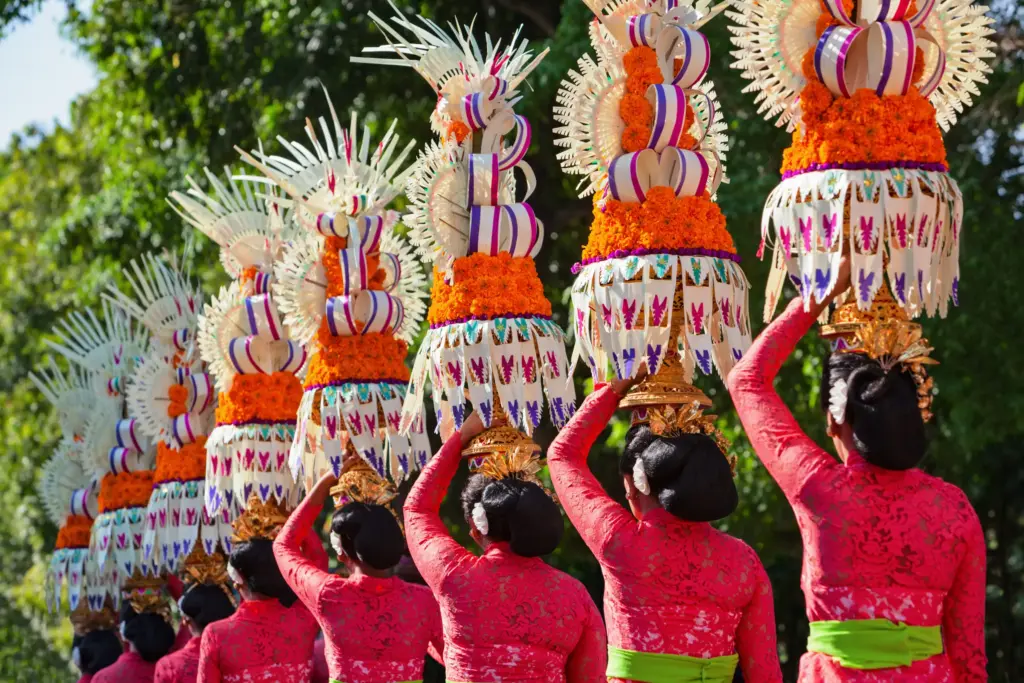
· Odalan: Temple anniversary, celebrated every 210 days.
· Melasti: Purification ceremony before Nyepi, often held at the beach.
· Ngaben: Cremation ceremony, a colourful, elaborate celebration of a soul’s journey to the afterlife.
Visitors are welcome at many ceremonies if they dress appropriately and follow local guidance.
THE ROLE OF RITUAL IN EVERYDAY LIFE
Balinese life is punctuated by ritual. Beyond the major temple ceremonies, there are blessings for new houses, vehicles, tools, and even business openings. Many rituals are tied to the Balinese calendar, which operates on two systems:
· Saka calendar (lunar) for annual festivals.
· Pawukon calendar (210-day cycle) for recurring temple anniversaries and ceremonies.
These layers of ritual mean there is almost always a ceremony happening somewhere on the island.
MAJOR TEMPLE FESTIVALS
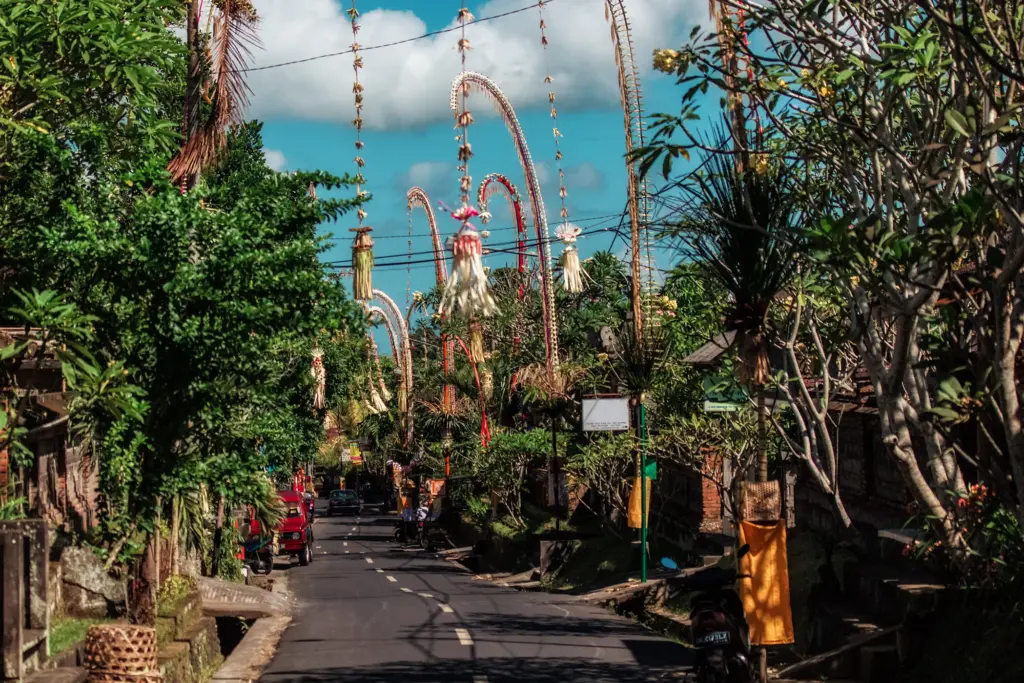
If your trip aligns with a festival, it’s worth adjusting your itinerary to witness it.
Nyepi – Day of Silence
Falling in March (date varies), Nyepi marks the Balinese New Year. The day before, colourful ogoh-ogoh effigies of demons are paraded through the streets. On Nyepi itself, the entire island shuts down – no lights, no travel, no noise – as a form of purification.
Galungan and Kuningan
Celebrated every 210 days, Galungan marks the victory of dharma (good) over adharma (evil). Penjor – tall, decorated bamboo poles – line the streets, and families visit temples. Kuningan, ten days later, concludes the festival.
Saraswati Day
A celebration of the goddess of wisdom, learning, and arts. Books and sacred texts are blessed.
CULTURAL ETIQUETTE FOR VISITORS
If you plan to visit temples or attend ceremonies, keep these guidelines in mind:
· Dress code: Wear a sarong and sash; cover shoulders. Many temples rent these at the entrance.
· No entry during menstruation (local custom).
· Photography: Ask permission, especially during ceremonies.
· Behaviour: Avoid pointing your feet at shrines, and do not climb on temple structures.
The following guidelines will also help you to participate respectfully if lucky enough to see or be included in a ceremony:
· Attend cultural workshops that explain offerings and rituals before visiting temples.
· Make a small donation at temples – this goes toward maintenance and ceremonies.
· Buy offerings from local women before entering a temple, and place them as directed.
EXPERIENCING BALINESE HINDUISM FIRSTHAND
Some of the best ways to experience the living religion include:
· Joining a local family for morning offerings.
· Watching a kecak dance at a temple, which often tells stories from the Ramayana.
· Visiting a water temple like Tirta Empul to take part in a purification ritual (with guidance, it is not just a chance to splash water over yourself on a hot day!).
Balinese Hinduism is not just a religion; it’s the framework for life on the island. From the intricate canang sari laid out each morning to the grand ceremonies that bring entire villages together, the faith is lived, not just practiced. For travellers, understanding even a little of this belief system deepens every experience – a temple visit becomes more than sightseeing, and an offering on the sidewalk becomes a connection to centuries of tradition.
By approaching with curiosity and respect, you’ll not only enjoy Bali’s beauty but also glimpse the spiritual heartbeat that makes the island so unique. Wander Beyond Ordinary!
